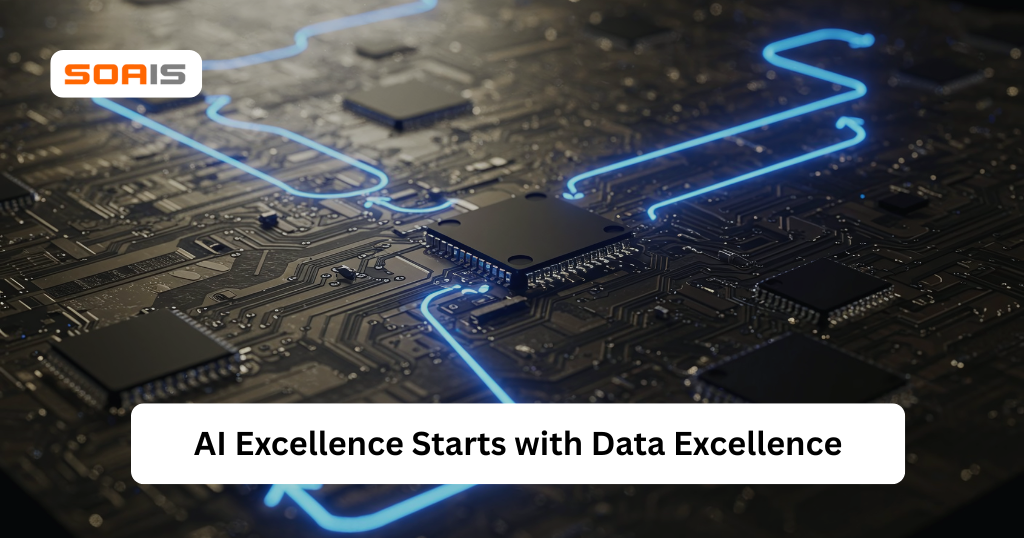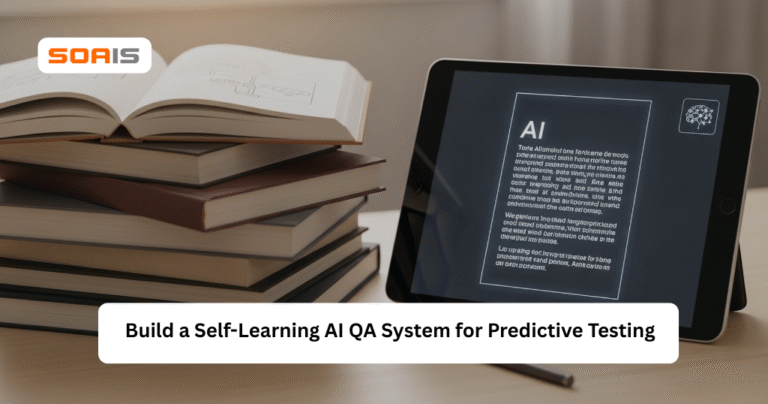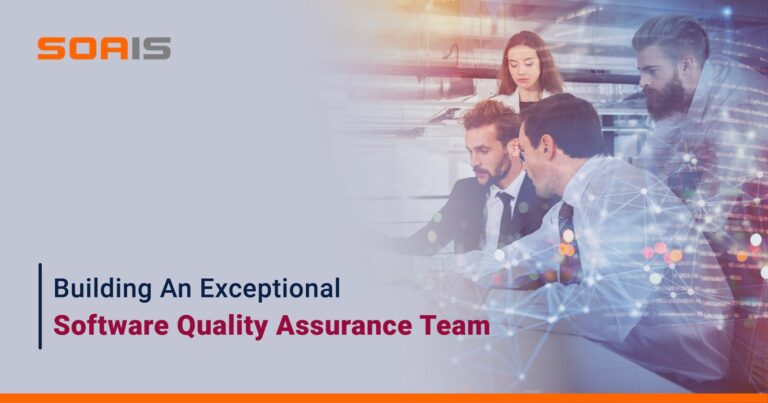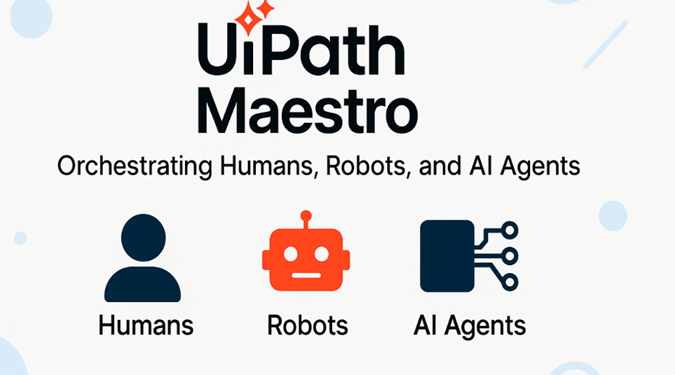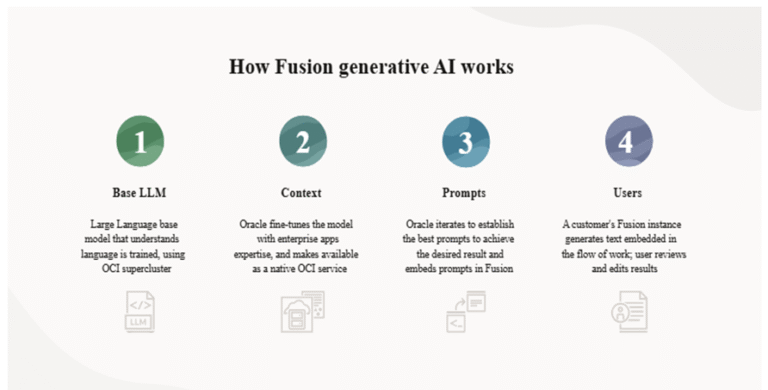AI Excellence Starts with Data Excellence
The year 2020 marked a pivotal moment in the history of Large Language Models (LLMs). For the first time, the public was introduced to new generative capabilities with ChatGPT-3, a breakthrough initiated by the important paper ‘Attention Is All You Need’, which created the transformer architecture to drive powerful processing of natural language. This milestone preparation natural language processing to a different place and launched the current generative AI era.
In a world of accelerated data, businesses are applying Generative AI (GenAI) to help improve efficiencies and reveal hidden insights in their SAP landscape. The ability to launch GenAI projects successfully is dependent on understanding that the master data must be trusted and consistent. This blog lays out the approach to combine Master Data Governance (MDG) with GenAI, allowing organizations to leverage Extent AI’s capabilities while trusting the foundational data in SAP. The outcome is simplified data management, better decision making, and effective transformational business outcomes.
The Power and Purpose of AI
Artificial intelligence is no longer the future but has quickly become an important part of the business strategy. According to research by Deloitte, almost all organizations (94%) believe that AI will be important for their future success, while 65% are already buying products, services or solutions that use AI technology.
As AI matures, its advantages to business are increasingly becoming apparent. As noted by SAP, there are five primary enterprise benefits of AI:
- Enterprise resilience
- Better customer outcomes
- Better, data-driven decision-making
- More relevant goods and services
- Engaged and empowered employees
As AI is brought into systems, processes, and people, we have entered into the “AI Everywhere Era.” By the mid-2025, half of all end-users were expected to use AI-augmented applications in all that they do, representing a change from systems of record to systems of intelligence. Further, by 2027, it is projected that over 75 percent of code generation and development tasks will be performed by Generative AI.
The message here is simple: any enterprise that does not take steps to embed AI capabilities will fail to keep up in an increasingly intelligent and competitive world.
So, Why AI in Enterprise Resource Planning (ERP) – especially in SAP?
SAP’s Enterprise Resource Planning (ERP) solution, including the legacy Business Suite, SAP ECC and the next generation of SAP S/4HANA has long been recognized for enabling resilient, end-to-end business processes. Based on decades of industry knowledge, SAP’s intelligent ERP now layers in new AI components like SAP Joule – “the AI copilot that really understands your business” – to help analyze vast amounts of transactional data, automate processes, and improve operational efficiency across the enterprise.
That said, AI reliant on transactional data within SAP ERP will naturally be limited to the quality of data it consumes. Transactional data (or situational data) is a critical foundation for analytics and decision-making and, both rely heavily on master data. When organization have poor quality or inconsistent master data, that compromises the quality of the transactional data. Poor quality transactional data also reduces the reliability of AI and AI-driven insights in SAP ERP.
In order to fully harness the value from AI, organizations will need to invest in establishing robust data governance to ensure master data is accurate, validated and enriched, this anchors trusted insights, reliability, humble automation and desired AI-driven outcomes.
No data strategy, no real AI
AI relies on data – specifically, high-quality, well-governed data. The effectiveness of AI systems is directly related to the accuracy, completeness, and timeliness of the provided data. If there is no coherent data strategy in place, it is possible that AI systems will return unreliable or inconsistent results.
This brings to mind the phrase: “Garbage in > Garbage out.” Even the most complex AI model will add no value if it is trained or run on poor-quality data. Reaching prediction confidence levels above 90% needs disciplined approaches to manage and ongoing iterations to improve data quality.
A good data strategy provides trusted, reliable data aligned with business intent. Clean, structured, and well-managed data will be the foundation for effective AI and digital transformation projects.
Risk Management in Artificial Intelligence
To implement AI effectively, a proactive risk management function must be adopted to cover four key areas in the Master Data Governance Framework:
- Data Privacy – AI applications in any environment should have full compliance with the rules of security and data regulations. AI capabilities and features should ensure that the unauthorized users do not get access to restricted data in the data source.
- AI Bias – The Master Data Governance Framework should address the need for continuous monitoring and validation of AI outputs through routine testing or through batch jobs. Bias mitigation processes should include retraining models or adjusting parameters to foster fairness and objectivity.
- AI Transparency – The framework takes into account explainability and interpretability, so stakeholders will be able to comprehend and trust AI-assisted recommendations and decisions.
- Governance and Oversight – An overall AI governance model will clearly articulate roles and responsibilities, establish policies and processes and implement reviews at all stages of the AI development cycle, including managing deployment and its ability to monitor compliance to policies and regulations.
Final Thoughts
Master Data Governance Framework: The Trusted Source for Achieving Success with AI
The Master Data Governance Framework will enable organizations to position themselves for success with AI by providing a foundation for managing and securing data that is trusted and governed appropriately. Incorporating sound governance principles into the data you manage, will enable your organization to trust and have confidence in data quality and use AI for superior business outcomes.
The framework needs to provide:
- Data-based decision-making: Leaders feel empowered to act with reliable and insight-rich data.
- Process mechanisms to help improve efficiency and operational performance: Having unnecessary processes in place can reduce efficiency and operational performance.
- Governance structures that provide comfort in complying with changing standards and expectations.
Aligned to SAP’s mission for the use of data in AI, the Master Data Governance Framework can provide structured methodologies, templates, and best business practices to support organizations in their AI journey. Working with SAP tools, such as DataSphere or SAP Analytics Cloud, organizations can put their data through quality tests to ensure they provide:
- Accuracy (the data will produce the results the AI outputs)
- Reliability (providing consistency and trust across the organization)
- Actionability (features will enable timely and informed decisions that produce results).
A data-driven approach prepares organizations to feel confident in their digital transformation, ensuring they will be sustainable and maintain a competitive advantage while building for ongoing continuous, responsible AI-enabled innovation.
References

